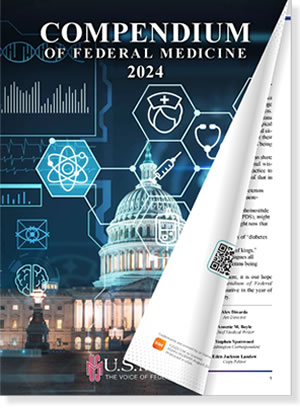BETHESDA, MD — Are intra-articular non-steroidal anti-inflammatory drugs a viable option for treatment of osteoarthritis in adults?
A new study from Walter Reed National Military Medical Center, the Uniformed Services University of the Health Sciences, both in Bethesda, MD, and Georgetown University School of Medicine in Washington, DC, sought to answer that question.
“Osteoarthritis (OA) is a common cause of joint disease and activity limitation in adults. Common therapies to treat OA-related pain are oral and topical non-steroidal anti-inflammatory drugs (NSAIDs) and intra-articular (IA) corticosteroids,” according to the article in The Journal of Clinical Pharmacy and Therapeutics. “However, prolonged courses of oral NSAIDs are associated with systemic adverse effects and repeat IA corticosteroid injections may cause cartilage degeneration. IA NSAIDs may be an alternative therapy, possibly minimizing systemic side effects while maintaining efficacy.”1
To summarize the pharmacokinetics, safety and efficacy of IA NSAIDs to help providers make a more-informed decision on their use, the study team searched the National Library of Medicine Database with terms “intra-articular and NSAID”, which yielded 1,032 results. Only traditional formulations of NSAIDs were considered for inclusion. Ultimately, of 1,032 results, 31 research articles involving humans or animals met the inclusion criteria.
The results indicated that single doses of IA NSAIDs provided far less total systemic and synovial exposure compared to a one-week course of oral NSAIDs, even though maximum concentrations to the synovium with IA administration were much higher.
The researchers pointed out that IA NSAIDs had an excellent safety profile in small animals, large animals and humans, noting that the injections were associated with nonspecific cartilage inflammation in healthy animals. “In animal models, IA NSAIDs had similar efficacy to PO NSAIDs in treating OA-related pain. In humans, IA NSAIDs had similar efficacy to PO NSAIDs and IA corticosteroids in treating OA-related pain; however, many trials did not have a placebo control and outcome measures were heterogeneous,” they explained.
The study concluded that the optimal use of IA NSAIDs is still to be determined and that further research is needed. “However,” the authors advised, “IA NSAIDs may be an additional beneficial therapy to treat OA-related pain. Potential uses may be to augment IA corticosteroids injections, to interrupt multiple IA corticosteroid injections or as an alternative in patients that are high risk for corticosteroid-related adverse events.”
The report emphasized that military populations and other young highly active populations are exposed to multiple potential risk factors for earlier development of OA. That underscores the need for safe and effective treatment, according to the researchers.
NSAIDs include salicylic acid derivatives (aspirin), aryl acetic acid derivatives (ibuprofen, naproxen), indole acetic acid derivatives (indomethacin), anthranilic acid derivatives (diclofenac) and enolic acid derivatives (meloxicam).
“While oral use of NSAIDs is by far the most common route of administration, both topical application and intra-articular (IA) injections of NSAIDs have become more common in a variety of settings both in order to presumptively increase NSAID concentration in the target tissue as well as, potentially reduce more broad systemic exposure in order to lower the risks of known gastrointestinal, cardiovascular and renal adverse effects of the compounds,” according to the authors. “One such common application is post‐operative analgesia, in particular for arthroscopy.”
Yet, they pointed out, that they were aware of no NSAID currently Food and Drug Administration (FDA)-approved for IA injection, although corticosteroids have that approval for treating OA‐related pain.
- Selig DJ, Kress AT, Horton IM, Livezey JR, Sadik EJ, DeLuca JP. Pharmacokinetics, safety and efficacy of intra-articular non-steroidal anti-inflammatory drug injections for the treatment of osteoarthritis: A narrative review. J Clin Pharm Ther. 2022 Aug;47(8):1122-1133. doi: 10.1111/jcpt.13669. Epub 2022 May 3. PMID: 35505520; PMCID: PMC9542014.


